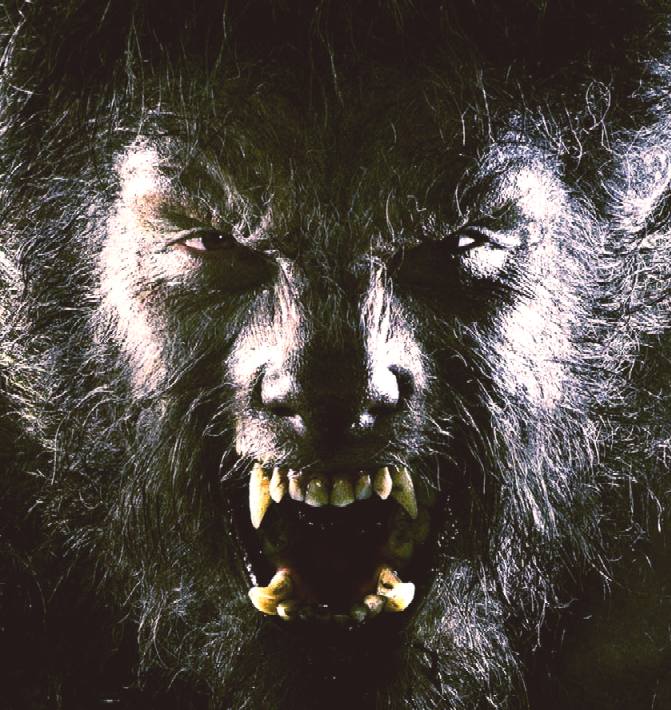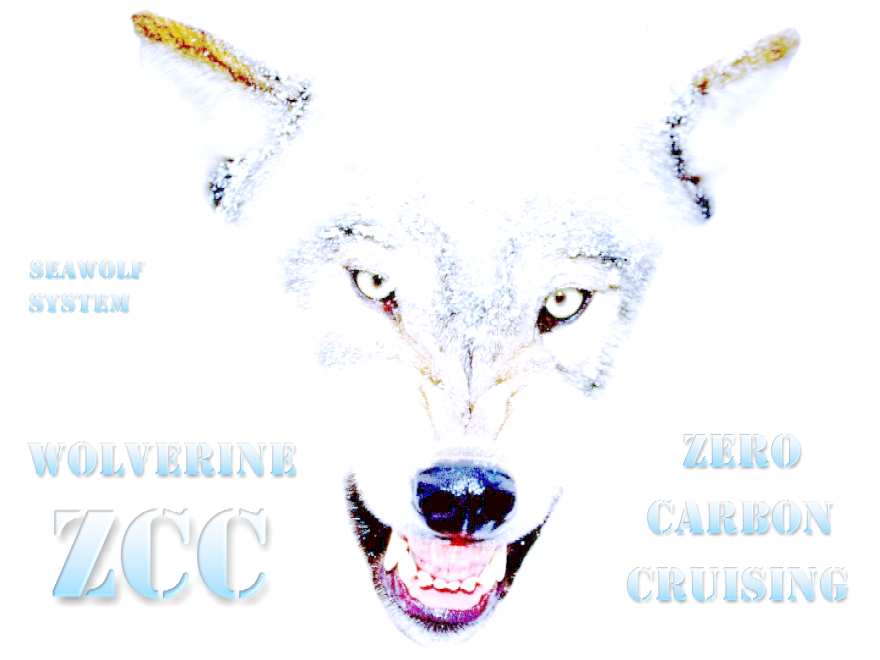|

Wolves
are feared by many humans.
Yet, dogs, which we love, are direct canine relations; their
domesticated cousins. For me wolves are fascinating creatures,
graceful and beautiful survivors. My favourite are werewolves, which are
of course fiction, but a jolly good story nevertheless, spawning
hundreds of horror books and films. Even though such a metamorphosis is physiologically
impossible, we still watch with a small amount of belief (for some hope)
that such things could be real.
The gray wolf or grey wolf
(Canis lupus) is a species of canid native to the wilderness and remote areas of
North America, Eurasia, and North
Africa. It is the largest member of its family, with males averaging 43–45 kg (95–99 lb), and females 36–38.5 kg (79–85
lb). It is similar in general appearance and proportions to a German shepherd, or sled dog, but has a larger head, narrower chest, longer legs, straighter tail and bigger paws. Its winter fur is long and bushy, and is usually mottled gray in color, though it can range from nearly pure white, red, or brown to black.
Within the genus Canis, the gray wolf represents a more specialised and progressive form than its smaller cousins (the coyote and golden jackal), as demonstrated by its morphological adaptations to hunting large prey, its more gregarious nature and its highly advanced expressive behavior. It is a social animal, travelling in nuclear families consisting of a mated pair, accompanied by the pair's adult offspring. The gray wolf is typically an apex predator throughout its range, with only humans and tigers posing a serious threat to it. It feeds primarily on large ungulates, though it will also eat smaller animals, livestock, carrion, and garbage.
The gray wolf is one of the world's most well researched animals, with probably more books written about it than any other wildlife species. It has a long history of association with humans, having been despised and hunted in most agricultural communities due to its attacks on livestock, while conversely being respected by some Native American tribes. It is the sole ancestor of the dog, which was first domesticated in the Middle East. Although the fear of wolves is prevalent in many human societies, the majority of recorded attacks on people have been attributed to animals suffering from rabies. Non-rabid wolves have attacked and killed people, mainly
children, but this is unusual, as wolves are relatively few, live away from people, and have been taught to fear humans by hunters and shepherds. Hunting and trapping has reduced the species' range to about one third, though its still relatively widespread range and stable population means that the species is not threatened at a global level, and is therefore classified by the IUCN as Least Concern.

The red wolf (Canis lupus rufus, formerly Canis rufus) is a North American canid which once roamed throughout the Southeastern
United
States. Based on fossil and archaeological evidence, the original red wolf range extended throughout the Southeast, from the Atlantic and Gulf Coasts, north to the Ohio River Valley and central Pennsylvania, and west to central Texas and southeastern Missouri. Historical habitats included forests, swamps, and coastal prairies, where it was an apex
predator. The red wolf is morphologically midway between grey wolves and coyotes, and recent genetic research indicates it may actually be a hybrid species. The red wolf was thought to be extinct in the wild by 1980. 1987 saw a reintroduction in northeastern North Carolina through a captive breeding program and the animals are considered to be successfully breeding in the wild.

POPULAR
MAMMALS:

BIRD
INDEX:
|
Albatros
Bishop,
Orange
Blue
Bird
Canary
Chaffinch
Chicken
Cockatoo
Corella, Long-Billed
Cormorant
Crane, African Crowned
Crane
Crow
Cuckoo
Dodo
Dove
Duck
Eagle
Egret, Cattle
Emu
Falcon
Finch
Fishers Lovebird
Flamingo
Grebe
Goose, Egyptian
Grouse
Guinea Fowl, Helmeted
Hammerkop
Hawk
Hornbill, Wreathed
Hornbill, Red-Billed
Hottentot, Teal
House
Martin
Ibis, Hadada
Ibis,
Sacred
Kite, Black
Kingfisher
|
Kiwi
Kookaburra
Lapwing Plover
Lilac-Breasted
Roller
Loon
Macaw
Mynah
Nightjar
Ostrich
Owl
Parrot,
Amazon
Parrot
Partridge
Peacock
Pelican
Penguin
Petrel
Pheasant
Pigeon
Quail
Robin
Roller, Blue-Bellied
Seagull
Sparrow
Spoonbill African
Starling
Stork
Swan
Swift
Toucan
Turkey
Vulture, Griffon
Wader
Weaver, Taveta Golden
Woodcock
Woodpecker
|

POPULAR
INSECTS:
|
Ants
Apid
Army
Ant
Bee
Beetles
Bulldog
Ant
Butterfly
Centipede
Cockroach
Crickets
Damsel
Fly
Death
Watch Beetle
Dragonfly
Dung
Beetle
Earwig
Fly
Grasshopper
Hornet
|
Ladybird
Leafcutter
Ant
Locust
Mantis,
Preying
Maybug
Millipede
Mosquito
Moth
Praying
Mantis
Scarab
Beetle
Stag
Beetle
Stick
Insect
Termite
Wasp
Water
Boatman
Wood
Ant
Woodlice
Woodworm |
Wolves
- Youtube
Index
to navigate Animal Kingdom:-

A
heartwarming adventure: Pirate
whalers V conservationists
with
a $billion dollars riding on the outcome.
|



